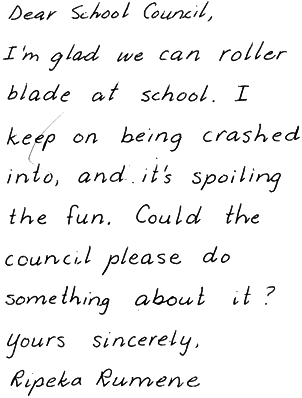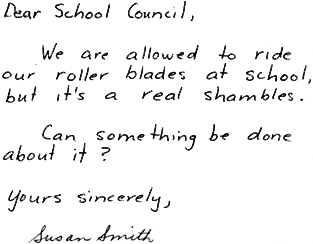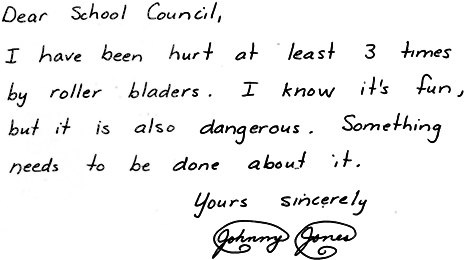|
:
Roller Blades
|
|
|||||
|
Questions
/ instructions:
Show and read the agenda.
During your meeting, you will need
to write brief notes or minutes. At the end of your meeting, I want you to tell
me what you have decided. Each person in the team should help to describe your
decisions. You have about 10 minutes, starting now. Here is the sheet for writing
down your meeting notes and the letters to the council. |
|||||
| % responses | |||||
|
y8 |
|||||
|
Statement
of the problem: full |
15 64 21 |
||||
|
Suggestions
for fixing problem: full |
31 51 18 |
||||
|
Suggested
ways to get input from roller bladers: full partial very limited |
19 53 28 |
||||
|
Ideas
for replying to the letters: full partial very limited |
14 45 41 |
||||
|
Reasons
for rules: full partial very limited |
28 58 14 |
||||
|
Overall
quality of responses: very good good fair poor |
9 42 46 3 |
||||
|
Quality
of participation/interaction: very good |
27 41 25 7 |
||||
|
Commentary: |
|||||
| [ top of the page | Social Studies Report 1997 ] | |||||


